After collecting rock and soil samples from the asteroid Bennu in 2020, the OSIRIS-REx spacecraft departed for Earth in May 2021, carrying this precious cargo. The mission has traveled a total of over 6.2 billion kilometers over 7 years since its launch by NASA in 2016.
At 10:42 AM on September 24 (21:42, Vietnam time), while flying past Earth at a speed of 44,500 km/h and at an altitude of 102,000 km, NASA’s OSIRIS-REx spacecraft released a capsule containing 250 grams of rock and soil samples collected earlier from the asteroid Bennu down to the Utah Test and Training Range, in the Utah desert, in the western United States.
The capsule landed gently at a speed of 17.7 km/h and remained intact thanks to a parachute, 10 minutes after entering Earth’s atmosphere, which was 3 minutes faster than expected.
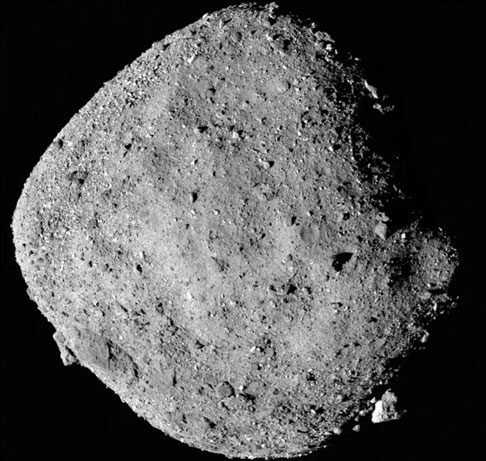
The 500-meter diameter Bennu is one of the asteroids that poses a potential collision risk with Earth in the future. (Photo: NASA/Goddard/University of Arizona).
After releasing the sample capsule, the OSIRIS-REx spacecraft continued its exploration of the solar system to approach and observe another asteroid named Apophis.
Rich Burns, the project director for OSIRIS-REx at NASA’s Goddard Space Flight Center in Greenbelt, Maryland, stated that when the capsule fell to Earth, it heated up to 2,760 degrees Celsius, and recovery personnel were equipped with gloves, masks, and special protective gear.
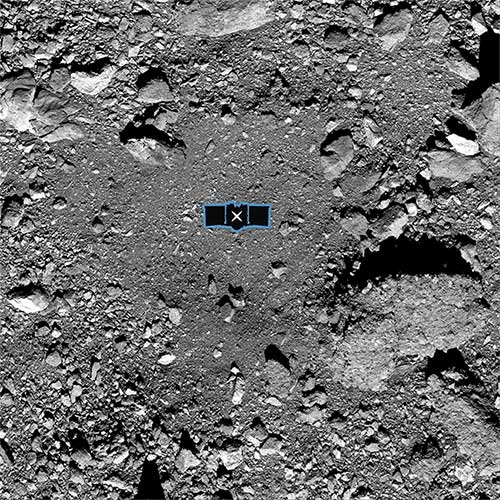
The location where the OSIRIS-REx spacecraft collected samples on the surface of asteroid Bennu. (Photo: NASA/Goddard/University of Arizona).
After temporary storage near the landing site, on September 25, the sample capsule will be transported by C-17 aircraft to NASA’s Johnson Space Center in Houston, Texas, where scientists will open it on September 26.
The first information about the samples is expected to be released by NASA on October 11.

The sample capsule plunging into Earth’s atmosphere. (Photo: @KUTV2News).
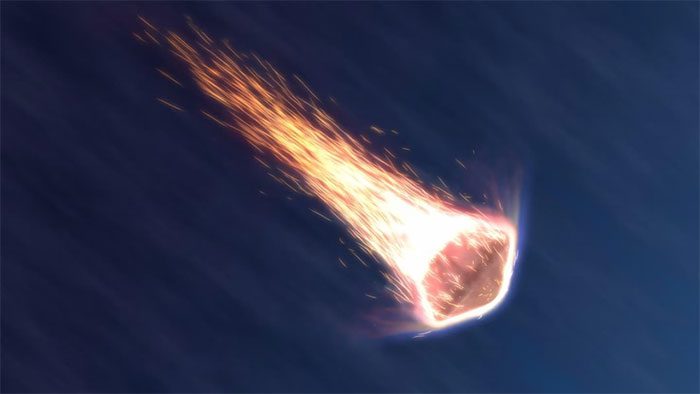
Illustration of the sample capsule entering Earth’s atmosphere. (Photo: NASA).
Scientists will analyze the samples over the next two years in a specialized clean room at the Johnson Space Center.
A portion of the material will also be shared with laboratories worldwide, including partners from the OSIRIS-REx mission at the Canadian Space Agency and the Japan Aerospace Exploration Agency (JAXA). Approximately 70% of the samples will be stored for future generations to explore with more advanced technology.
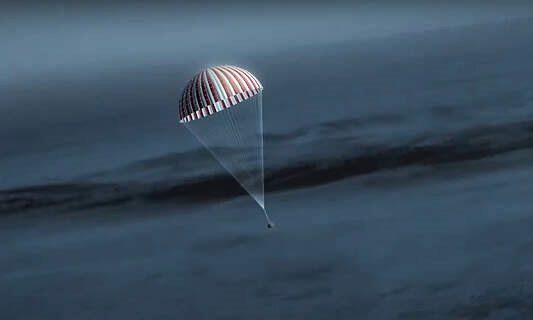
The sample capsule landing on Earth with parachute support. (Photo: NASA).
Along with the sample from the Ryugu asteroid returned earlier from Japan’s Hayabusa2 mission, the rock and soil samples could provide crucial information about the beginnings of the solar system. Scientists believe that carbon-rich asteroids like Bennu collided with Earth early in the planet’s formation, bringing essential elements like water.
“Scientists believe that the asteroid Bennu represents some of the oldest materials in the solar system forged in dying massive stars and supernova explosions. For this reason, NASA is investing in missions dedicated to these small celestial bodies to enhance our understanding of how the solar system formed and evolved,” said Lori Glaze, director of NASA’s Planetary Science Division.
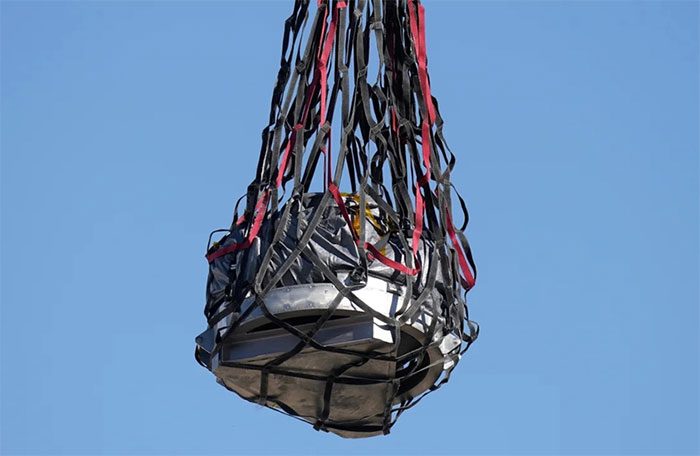
The sample capsule preparing to land. (Photo: Rick Bowmer/AP).
This sample could also provide valuable insights into Bennu, an asteroid that poses a potential collision risk with Earth in the future.
It is crucial to deepen our understanding of the number of near-Earth asteroids that could potentially collide with our planet. Gaining a better understanding of their composition and orbits is key to predicting which asteroids may approach Earth closest and when, and is essential for developing methods to deflect these asteroids based on their composition.
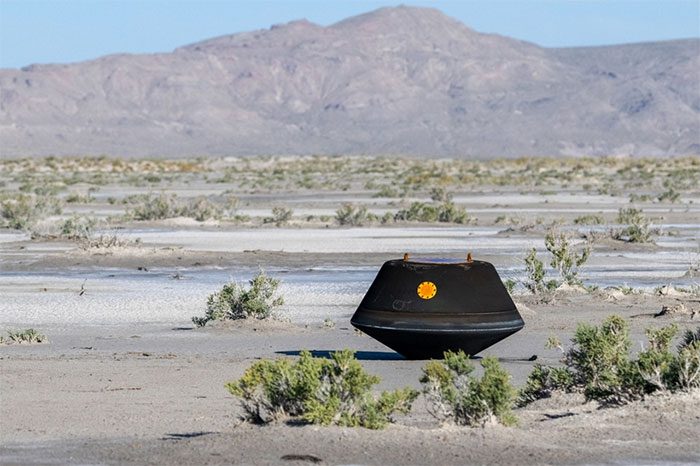
The sample capsule safely landing on Earth. (Photo: NASA / Keegan Barber).
OSIRIS-REx has undergone a long journey over the past 7 years. Launched from Cape Canaveral in 2016, NASA’s spacecraft reached orbit around the asteroid Bennu in December 2018.
The OSIRIS-REx spacecraft collected rock and soil samples in 2020 and began its long journey back to Earth in May 2021. The mission has traveled a total of over 6.2 billion km to Bennu and back.
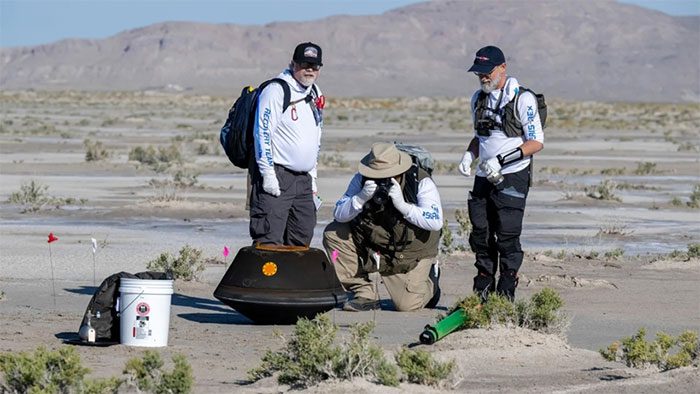
NASA personnel approaching to recover the sample capsule. (Photo: Keegan Barber/NASA).
OSIRIS-REx surveyed the entire asteroid, approximately 500 meters in diameter, to determine the best location for sample collection.
During the historic sampling event, the spacecraft’s sampling head penetrated 0.5 meters into the surface of the asteroid, indicating that Bennu’s outer layer is made up of loosely bound particles.


















































